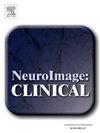What do we know about intratumoral functional activity: a scoping review of imaging and intra-surgery results
IF 3.6
2区 医学
Q2 NEUROIMAGING
引用次数: 0
Abstract
Intratumoral functional tissue represent a challenge in neurosurgery, as its resection may induce a permanent postoperative deficit. Only little is said in literature about this pattern. Currently this issue is receiving increased attention and in the last few years, the number of reports on intratumor functionality has increased. Aim of the current review was to provide a comprehensive overview of intratumoral area functionality patterns and of how much frequently this pattern is reported. PRISMA guidelines were followed. We identified 107 papers, but only 24 articles on 1220 patients were included for having reported intratumoral activation data. Within this framework, we aimed to shed light on some issues, including whether i) it is expressed only as fMRI activation within the mass, or whether it impacts on distant areas via functional connectivity, ii) it is found in slow growing tumors such as low grade glioma or also for fast infiltrative processes such as for high grade glioma, and iii) inhomogeneity of the tumor structure and morphological appearance or the tumor histology are key factors determining intratumoral area functionality. Key methods suitable for detecting intratumour function included MEG (in 7 studies), resting-state fMRI and task-active fMRI (in 8 studies) and intra-surgery direct cortical stimulation (in 8 studies). The type of patients were patients with astrocytoma (321 cases) and oligodendroglioma (255 cases) with tumor grade II (252 cases) and isocitrate dehydrogenase (IDH) mutation. Their mean tumor volume was 53.11 ± 19.23, and the affected hemisphere was mainly the left one (895 cases); lesion site most frequently involved the frontal cortex (435 cases). We discussed the clinical implications of these aspects, as a functional intratumoral area has a high impact on both planning and outcome, and we addressed the role of intra-surgery cognitive monitoring that should encompass a wide variety of functions.
我们对肿瘤内功能活动了解多少:影像学和手术内结果的范围回顾
肿瘤内的功能组织是神经外科的一个挑战,因为它的切除可能会导致永久性的术后缺陷。文献中很少提到这种模式。目前这个问题正受到越来越多的关注,在过去的几年里,关于肿瘤内功能的报道数量有所增加。本综述的目的是提供肿瘤内区域功能模式的全面概述,以及这种模式的报道频率。遵循PRISMA准则。我们确定了107篇论文,但只有24篇涉及1220例患者的文章报道了肿瘤内激活数据。在这个框架内,我们的目标是阐明一些问题,包括i)它是否仅以肿块内的fMRI激活表达,或者它是否通过功能连接影响远处区域,ii)它是否存在于缓慢生长的肿瘤中,如低级别胶质瘤,或也存在于快速浸润过程中,如高级别胶质瘤。iii)肿瘤结构和形态外观或肿瘤组织学的不均匀性是决定肿瘤内区域功能的关键因素。适用于检测肿瘤内功能的主要方法有:MEG(7项研究)、静息状态功能mri和任务活动功能mri(8项研究)、术中直接皮层刺激(8项研究)。患者类型为星形细胞瘤(321例)和少突胶质细胞瘤(255例),伴ⅱ级肿瘤(252例)和异柠檬酸脱氢酶(IDH)突变。平均肿瘤体积为53.11±19.23,以左半球为主(895例);病变部位最常累及额叶皮质(435例)。我们讨论了这些方面的临床意义,因为肿瘤内的功能区域对计划和结果都有很大的影响,我们讨论了术中认知监测的作用,它应该包括各种各样的功能。
本文章由计算机程序翻译,如有差异,请以英文原文为准。
求助全文
约1分钟内获得全文
求助全文
来源期刊

Neuroimage-Clinical
NEUROIMAGING-
CiteScore
7.50
自引率
4.80%
发文量
368
审稿时长
52 days
期刊介绍:
NeuroImage: Clinical, a journal of diseases, disorders and syndromes involving the Nervous System, provides a vehicle for communicating important advances in the study of abnormal structure-function relationships of the human nervous system based on imaging.
The focus of NeuroImage: Clinical is on defining changes to the brain associated with primary neurologic and psychiatric diseases and disorders of the nervous system as well as behavioral syndromes and developmental conditions. The main criterion for judging papers is the extent of scientific advancement in the understanding of the pathophysiologic mechanisms of diseases and disorders, in identification of functional models that link clinical signs and symptoms with brain function and in the creation of image based tools applicable to a broad range of clinical needs including diagnosis, monitoring and tracking of illness, predicting therapeutic response and development of new treatments. Papers dealing with structure and function in animal models will also be considered if they reveal mechanisms that can be readily translated to human conditions.
 求助内容:
求助内容: 应助结果提醒方式:
应助结果提醒方式:


